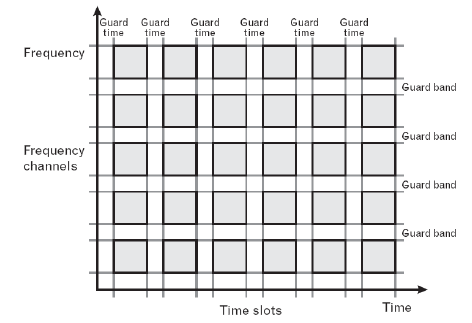FDMA/TDMA Combination
Frequency Division Multiplexing and Time Division Multiplexing can be combined to enhance communication efficiency. Here’s how this combination works:
-
GSM Systems: In GSM (Global System for Mobile Communications), the system uses a combination of FDMA and TDMA. This allows for efficient use of the available spectrum and increased capacity.
-
Channel Allocation:
- FDMA divides the frequency spectrum into distinct channels. Each user is allocated a unique frequency band, which reduces interference from other users.
- TDMA divides each frequency channel into time slots. Each user is assigned a specific time slot within the frequency channel to transmit their data.
-
Burst Traffic: Traffic is burst onto the channel at specific intervals or periods. This means that users transmit data in short bursts rather than continuously, which helps in managing the available bandwidth more effectively.
-
Reduced Interference: Combining FDMA and TDMA reduces interference because:
- Frequency Separation: FDMA separates users by different frequencies, minimizing interference between them.
- Time Slot Separation: TDMA further reduces interference by allocating specific time slots for each user’s data transmission within a frequency channel.
By combining these two techniques, more channels can be used efficiently, and the system can handle a higher number of simultaneous users with less interference.
Illustration
